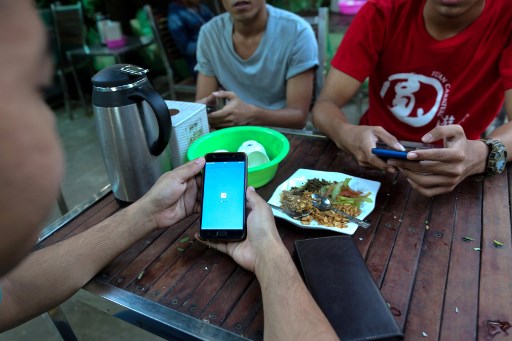Zawgyi, the most popular Burmese-language font on every social media platform, is lovely looking (really!). It’s also a massive problem if you’re trying to search for articles or look up chicken curry recipes.
Long a point of debate among software developers and users alike, the Ministry of Transport and Communications yesterday all but said it’s ready to kiss the non-standard, Burmese-specific font goodbye as it announced that phone importers and resellers will be required to only import phones with Unicode going forward.
The move is part of the push towards an e-Government system, including a data ID card system, efficient electronic services in various sectors, and a higher level of participatory democracy, according to the Myanmar e-Government Master Plan (2016-2020).
“Unicode is the universal standard around the world. We are working hard to bring Myanmar up to speed. Everyone has to eventually use Unicode,” U Myo Swe said.
Zawgyi’s inherent incompatibility with every other language-encoding scheme in the world is behind the “great migration to Unicode,” according to a Frontier feature on the “Battle of the fonts.”
Burmese requires numerous modifications to single written characters, whereas in the Roman alphabet, each letter can be assigned a specific code point. This makes the encoding of Burmese much more complicated, and forced authors of early Burmese fonts to create work-arounds by allowing multiple ways to write combined characters.
While the characters might be legible to the human eye, the computer sees them as completely different letters. This may seem like a minor problem, but the inefficiency of Zawgyi has made searching, ordering, manipulating and indexing online content a nightmare for software developers.
The problem will only get worse as many phones continue to come with Zawgyi out of the box, mindful of the large and growing user-base of the font. As more and more people in Myanmar go online using Zawgyi, the wealth of content that is being produced becomes fragmented and disassociated from indexes. In other words, that content is almost impossible to search.
That is why the Communications Ministry is intervening at what they see as the root of the problem: phone resellers who have Zawgyi pre-installed on the phones they sell. The network effect is perhaps the only thing keeping the font alive.
The consequences of incompatible fonts extend far beyond a couple of ineligible words on your screen. Rampant hate speech on Facebook has run amok, in part, due to the lack of oversight and a shortage of moderators and fact checkers.
Ordinarily, Facebook relies on artificial intelligence to sweep through its platform to detect hate speech. However, the difficulty that Zawgyi poses (including myriad ways to write a single word) makes that more than daunting.




